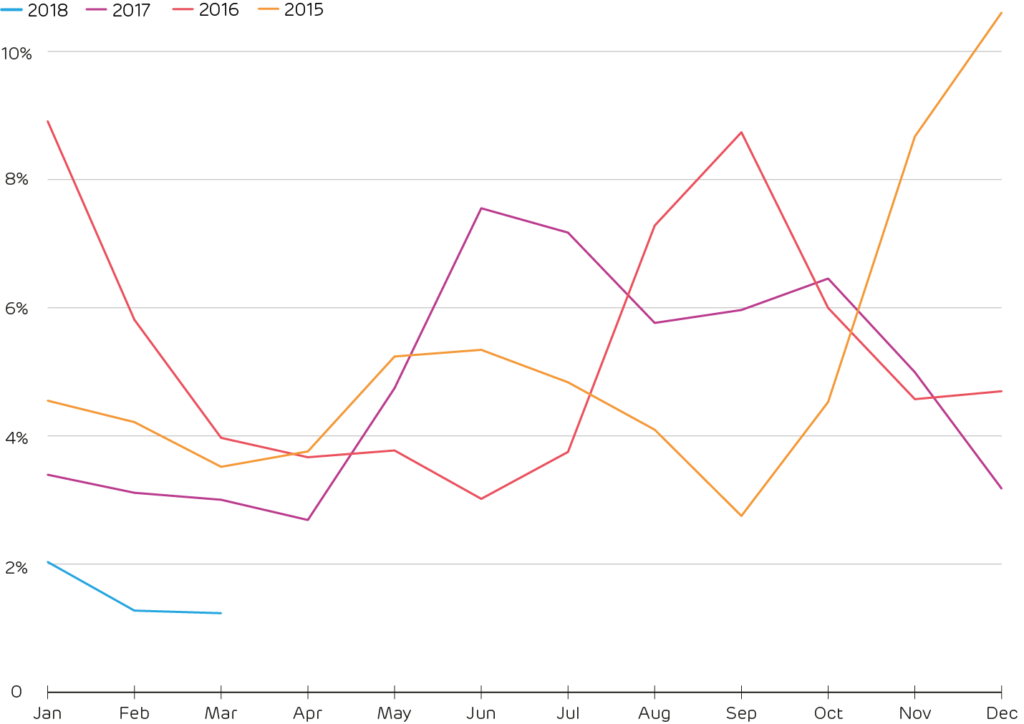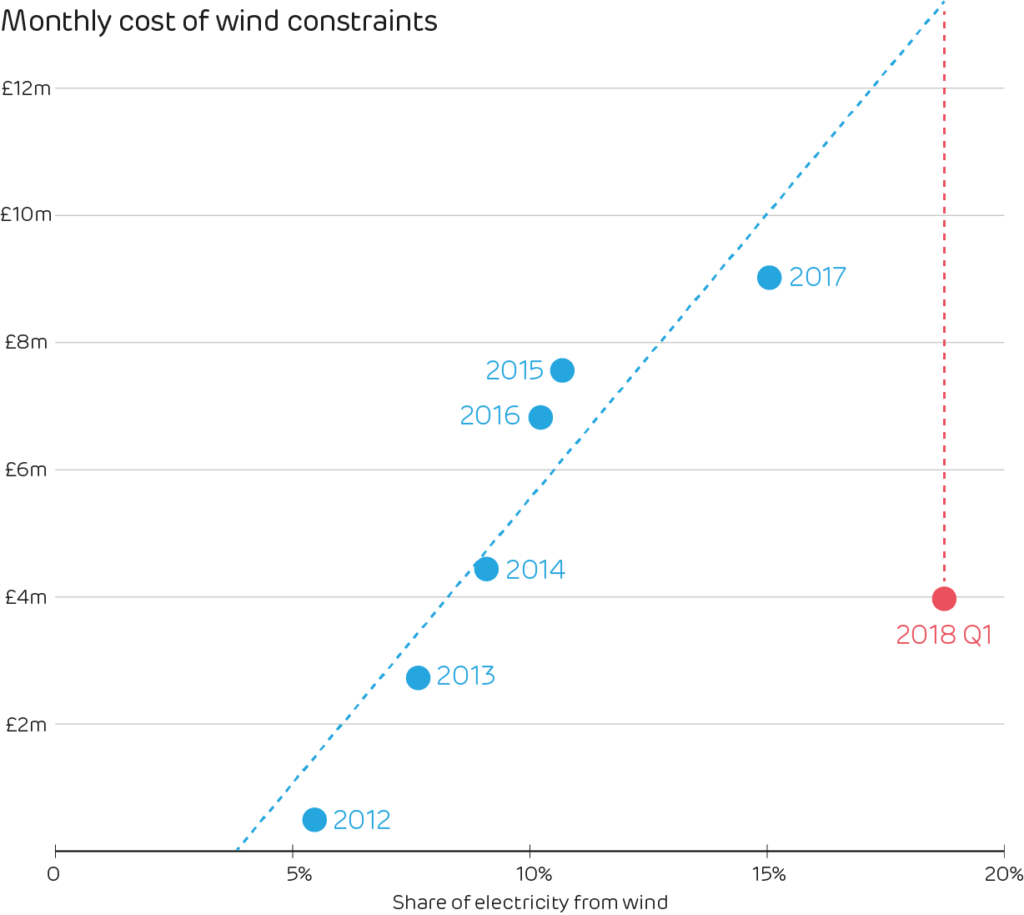Q1 2018: Wind farm curtailment falls by two-thirds
Download PDF
by Dr Iain Staffell – Imperial College London
It has been a familiar headline over the years: “Britain’s wind farms paid millions to sit idle“. Last year, National Grid paid over £100m to turn wind farms off when their output could have overloaded the transmission system.
But now that a new link between Scotland and Wales has come online, the amount of money (and clean energy) that was lost has quietly fallen by two-thirds.
Power stations can only sell their output if the electricity can be handled by the transmission grid, otherwise they have to be ‘constrained’ off. Nationwide, constraints have risen from almost nothing five years ago to over 5% of wind generation (see chart, below)1. This is not a problem unique to Britain though, constraint rates average 4–5% in Germany and 12–15% in China, with some Chinese provinces seeing 40% of wind generation lost.
Wind constraints are a particular problem in Scotland, where 7.7 GW of wind capacity feeds a demand that averages just 3 GW. Until recently there were only three lines connecting Scotland to England and Northern Ireland, totalling around 3.25 GW. This helps to explain why a sixth of Scotland’s available wind energy was lost in 2015/16, with curtailment rates of up to 30% at individual farms2. Seven Scottish wind farms accounted for half of all the wind energy constrained across Britain.
The share of wind energy lost to curtailment in Britain. A new transmission link between Scotland and Wales came online in December 2017. Curtailment is often higher in summer months when demand is lower, as high wind output becomes harder to manage.

Wind farms are not the only type of power station to be constrained, but they matter because reducing their output costs money, rather than saving it. Wind farms lose their subsidy payments if they are forced to turn off, so they request payment from National Grid as compensation. The average wind farm charged £69/MWh to be curtailed in 2017, a price which has halved in the last four years.
Since 2012, National Grid has spent over £380 million on constraining wind farms: around £1 per person per year. The cost has risen in line with the amount of wind generation: once wind had reached 4 percent of Britain’s electricity supply, each additional percent of wind energy added £1m per month to the cost of constraint payments (see chart, below).
However, this trend appears to have been broken, as the payments this quarter were the lowest since Q1 2013, despite wind production more than doubling since then. In December 2017 the ‘Western HVDC Link’ came online, a new 2.2 GW cable connecting Scotland to North Wales3. The £1bn link was built in the Irish Sea rather than on land, to minimise visual impact.
From the figure below, a crude estimate is that this link saved National Grid around £9m per month during Quarter 1 on constraint payments. These savings could pay back the construction cost in under 10 years if they continued. The benefits are not just financial though – if we could have utilised all of Scotland’s wind power last year by eliminating grid constraints, the annual capacity factor of Scottish wind farms would have improved by a sixth, from 27% to 32%.
The monthly cost of constraining wind farms to National Grid versus the share of electricity generated from wind

1. We measure this against transmission-connected wind output. Constraints in the ‘embedded’ wind farms (smaller farms and those in England & Wales) are not monitored, or paid for. 2. Joos & Staffell, 2018. Wind curtailment and balancing in Britain and Germany. National Energy Administration, 2017. www.nea.gov.cn. 3. The link has only operated at half power whilst it is commissioned. It is expected to be offline for final testing between April and June.
Authors: Dr Iain Staffell and Michael Joos.